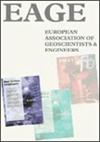A Framework for GPR‐based Water Leakage Detection by Integrating Hydromechanical Modelling into Electromagnetic Modelling
IF 1.6
4区 地球科学
Q3 GEOCHEMISTRY & GEOPHYSICS
引用次数: 0
Abstract
Abstract Timely and accurate detection of water pipe leakage is critical to preventing the loss of freshwater and predicting potential hazards induced by the change in underground water conditions, thereby developing mitigation strategies to improve the resilience of pipeline infrastructure. Ground Penetrating Radar (GPR) has been widely applied to investigating ground conditions and detecting pipe leakage. However, due to uncertainties of complex underground environments and time‐lapse change, a proper interpretation of GPR data has been a challenging task. This paper aims to leverage hydromechanical (HM) modelling to predict electromagnetic (EM) responses of water leakage detection in diverse leakage cases. A high‐fidelity 3D digital model of an actual pipeline network, hosting pipes with various sizes and materials, was reconstructed to represent the complex geometry and various mediums. The interoperability between the digital model and the numerical models utilised in HM and EM simulations was improved to better capture the irregular pipelines. Based on Kriging interpolation and the volumetric Complex Refractive Index Model (CRIM), a linking technique was employed to replicate material heterogeneity caused by water intrusion. Thus, a framework was developed to accommodate the interoperability among digital modelling, HM modelling, and Finite‐Difference Time‐Domain (FDTD) forward modelling. Moreover, sensitivity studies were conducted to evaluate the influences of different time stages, leak positions, and pipe types on GPR responses. In GPR B‐scans, the presence of hyperbolic motion and horizontal reflections serve as indicators to estimate the location and scale of water leakage. Specifically, a downward‐shifting hyperbola indicates that the pipeline is submerged by leaked water, while the emergence of horizontal reflection is linked to the wetting front of saturated areas. The developed framework can be expanded for complicated applications, such as unknown locations and unforeseen failure modes of pipelines. It will increase the efficiency and accuracy of traditional interpretations of GPR‐based water leakage detection and thus enable automated interpretations by data‐driven methods. This article is protected by copyright. All rights reserved基于探地雷达的水力学模型与电磁模型相结合的漏水检测框架
及时、准确地检测输水管道泄漏,对于防止地下水条件变化导致的淡水损失和预测潜在危害,从而制定缓解策略,提高管道基础设施的恢复能力至关重要。探地雷达(GPR)在地情调查和管道泄漏检测中得到了广泛的应用。然而,由于复杂地下环境的不确定性和时间推移的变化,对探地雷达数据的正确解释一直是一项具有挑战性的任务。本文旨在利用流体力学(HM)模型来预测不同泄漏情况下漏水检测的电磁响应。一个实际管道网络的高保真三维数字模型,承载各种尺寸和材料的管道,重建以表示复杂的几何形状和各种介质。改进了HM和EM模拟中数字模型与数值模型之间的互操作性,以更好地捕获不规则管道。基于Kriging插值和体积复折射率模型(CRIM),采用连接技术模拟水侵引起的材料非均质性。因此,开发了一个框架,以适应数字建模、HM建模和时域有限差分(FDTD)正演建模之间的互操作性。此外,还进行了敏感性研究,以评估不同时间阶段、泄漏位置和管道类型对探地雷达响应的影响。在探地雷达B‐扫描中,双曲运动和水平反射的存在可以作为估计漏水位置和规模的指标。具体来说,向下移动的双曲线表明管道被泄漏水淹没,而水平反射的出现与饱和区域的润湿锋有关。开发的框架可以扩展到复杂的应用,例如未知位置和不可预见的管道失效模式。它将提高基于探地雷达的传统解释的效率和准确性,从而实现数据驱动方法的自动解释。这篇文章受版权保护。版权所有
本文章由计算机程序翻译,如有差异,请以英文原文为准。
求助全文
约1分钟内获得全文
求助全文
来源期刊

Near Surface Geophysics
地学-地球化学与地球物理
CiteScore
3.60
自引率
12.50%
发文量
42
审稿时长
6-12 weeks
期刊介绍:
Near Surface Geophysics is an international journal for the publication of research and development in geophysics applied to near surface. It places emphasis on geological, hydrogeological, geotechnical, environmental, engineering, mining, archaeological, agricultural and other applications of geophysics as well as physical soil and rock properties. Geophysical and geoscientific case histories with innovative use of geophysical techniques are welcome, which may include improvements on instrumentation, measurements, data acquisition and processing, modelling, inversion, interpretation, project management and multidisciplinary use. The papers should also be understandable to those who use geophysical data but are not necessarily geophysicists.
 求助内容:
求助内容: 应助结果提醒方式:
应助结果提醒方式:


